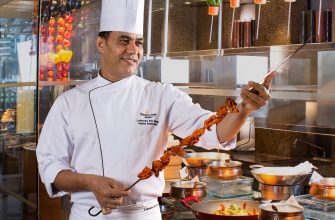In the world of home cooking, mastering essential knife skills is a game-changer. Properly handling a knife can not only make your time in the kitchen more enjoyable, but also safer and more efficient. In this article, we will walk you through some essential knife skills every home cook should master, as well as provide tips for practicing and maintaining your knives.
Choosing the Right Knife
Before you can hone your knife skills, you need to choose the right knife for the task. A chef’s knife is the most versatile and commonly used knife in the kitchen, perfect for chopping, slicing, and dicing. A paring knife is ideal for smaller tasks, like peeling fruits or trimming vegetables. A serrated knife, on the other hand, is best for slicing bread and other soft foods. Remember to keep your knives sharp, as a dull knife can be more dangerous than a sharp one.
The Proper Grip
The way you hold your knife is crucial for safety and control. Grip the handle of the knife with your dominant hand, with your thumb and index finger pinching the blade near the handle. This grip, known as the “pinch grip,” provides maximum control and stability. Your remaining fingers should wrap around the handle, ensuring a firm grip.
Basic Knife Techniques
There are several fundamental knife techniques that every home cook should know:
- Chopping: This technique involves cutting food into small, uniform pieces. To chop, hold the knife with a proper grip and use a rocking motion, moving the blade up and down while keeping the tip in contact with the cutting board.
- Slicing: To slice, hold the knife with a proper grip and make a smooth, downward motion, allowing the full length of the blade to come into contact with the food.
- Mincing: Mincing involves cutting food into very small, fine pieces. To mince, use a rocking motion similar to chopping, but move the knife more quickly and with shorter strokes.
Practicing and Maintaining Your Skills
To improve your knife skills, practice is essential. Start with simple tasks like chopping onions or slicing carrots and work your way up to more complex cuts. Additionally, keep your knives sharp, as a dull knife can lead to accidents and poor cutting performance. Regularly hone your knives with a honing rod, and consider having them professionally sharpened when needed.
Advanced Knife Techniques
Once you’ve mastered the basic knife techniques, it’s time to expand your skills with some advanced techniques:
- Julienne: Julienning involves cutting food into thin, matchstick-like strips. To julienne, first slice the food into even, flat pieces. Then, stack these slices and cut them into thin, even strips.
- Brunoise: A brunoise is a very small dice, often used for garnishes or to add texture to a dish. To make a brunoise, first julienne the food, then gather the strips together and cut them into tiny cubes.
- Chiffonade: This technique is used to cut leafy greens or herbs into thin, ribbon-like strips. Stack the leaves on top of each other, roll them tightly, and then slice the roll crosswise with a smooth, even motion.
Knife Safety Tips
Now that you’re familiar with various knife techniques, it’s crucial to keep safety in mind:
- Always use a stable cutting surface: A wobbly or slippery cutting board can lead to accidents. Use a non-slip mat under your cutting board to keep it steady.
- Keep your fingers tucked: When holding the food, curl your fingers under so your knuckles act as a guide for the knife, preventing it from slipping and cutting your fingers.
- Focus on the task at hand: Avoid distractions while using a knife. Stay focused on the cutting and take breaks if needed.
- Clean and store knives properly: Clean knives immediately after use and store them safely in a knife block or on a magnetic strip to prevent accidents and maintain their sharpness.
In conclusion, mastering essential knife skills can make your time in the kitchen more enjoyable and efficient. By understanding the proper grip, selecting the right knife, and practicing basic techniques, you’ll be well on your way to becoming a skilled home cook. So, grab a knife and start practicing today!


